Cheatgrass (Bromus tectorum L.), or downy brome, a native to parts of Africa, Asia, and Europe, began arriving in the North America as early as the 18th century. Initially cheatgrass was only present as isolated populations, but it has since become one of the most widely distributed plants (invasive or native) in all of North America. The history of cheatgrass is tied closely to the history of western expansion. As the Great Plains and western United States were grazed by livestock, plowed under for cultivation, or used for railroad and highway construction, cheatgrass took advantage of these disturbances.
Herbicide Options for Controlling Cheatgrass
Herbicides for controlling cheatgrass are most effective when applied in late September through April, but efficacy can decrease in the spring. Products containing rimsulfuron and imazapic (Plateau®) can provide good control of cheatgrass from a single application, but control can vary widely from year to year depending on when the application is made, maturity of cheatgrass plants, and the weather patterns. A one-time management operation with either grazing, mowing, or a non-residual herbicide, like rimsulfuron or imazapic, usually does not have a lasting impact on the cheatgrass in the seedbank. To reduce the seedbank, control needs to be close to 100%, and repeated over several years.
Rejuvra™ is a new rangeland herbicide product from Bayer that works differently from existing cheatgrass herbicide products. Rejuvra™ has limited activity on emerged plants and only controls seedlings as they germinate. Rejuvra™ can provide control for more than a year after application. The active ingredient, indaziflam, stays in the soil for months and next season cheatgrass is controlled as it germinates. If Rejuvra™ were applied in the fall after emergence of cheatgrass seedlings, either glyphosate, rimsulfuron, or imazapic would need to be mixed with Rejuvra™ to control any emerged cheatgrass at the time of application, however Rejurvra™ would control cheatgrass that emerges after the application date.
How Well Does it Work?
At the Panhandle Research and Extension Center, we have conducted two different trials with indaziflam, one trial in a cheatgrass monoculture, and another in a rangeland site with a mix of cheatgrass, forbs, and grasses. The product we screened in both trials was Esplanade™. Esplanade™ has the exact same concentration of indaziflam as Rejuvra™, meaning a 5 fl oz rate of both products will provide the same level of cheatgrass control. The only difference between Esplanade™ and Rejuvra™ is that Rejuvra™ can be applied on pasture or rangeland which will be grazed and at a 5 fl oz per acre rate. Esplanade™ can be applied at higher rates, but it is intended for vegetation control in industrial sites and right-of-ways.
Cheatgrass Monoculture Study
In April of 2016 Plateau® and Esplanade™ were applied to control cheatgrass at an abandoned horticultural site which had become a monoculture of cheatgrass. Plateau® was applied at 7 fl oz per acre and Esplanade™ was applied at 5 and 7 fl oz per acre. Esplanade™ was applied with glyphosate to control already emerged weeds. Cheatgrass control was assessed in November of 2016, May of 2017, and June of 2018 (Figure 1).
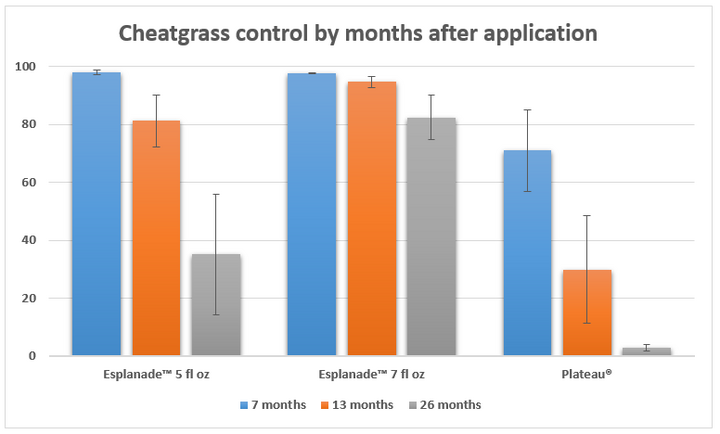
Plateau® provided reasonably good control seven months after application (60-80%), but by 13 months after application cheatgrass was no longer being controlled by Plateau®. Esplanade applied at either 5 or 7 fl oz provided greater than 95% control seven months after application. By 13 months after application, a difference between both rates was noticeable, with the 5 fl oz rate providing around 80% control while the 7 fl oz rate was providing greater than 90% control. By 26 months, the 5 fl oz rate was not holding back the cheatgrass, but the 7 fl oz rate was still providing around 80% control. By fall of 2018, 30 months after application, all treatments were no longer controlling the cheatgrass.
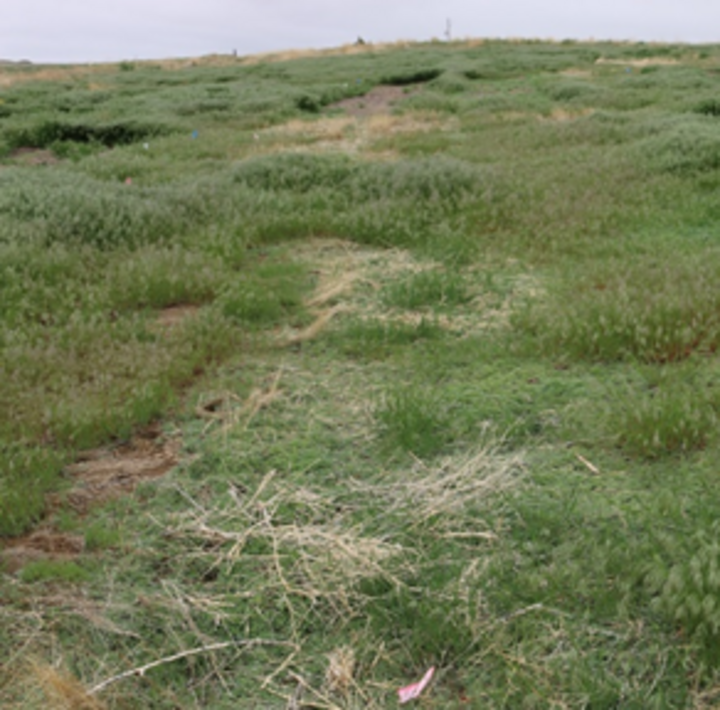
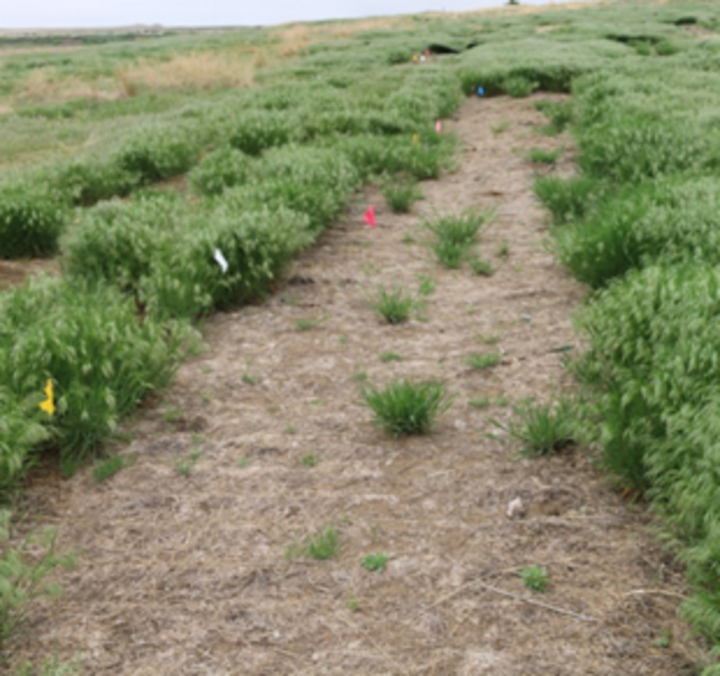
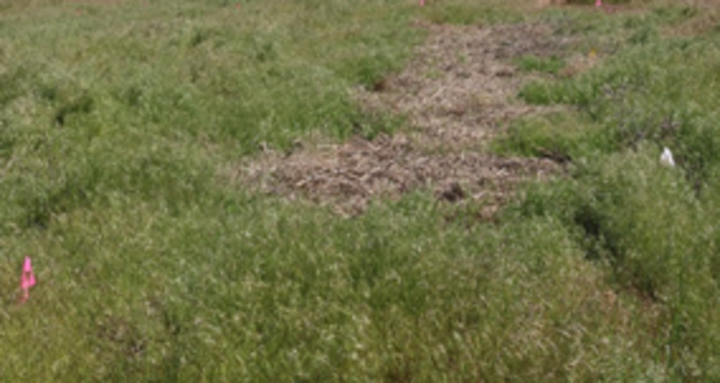
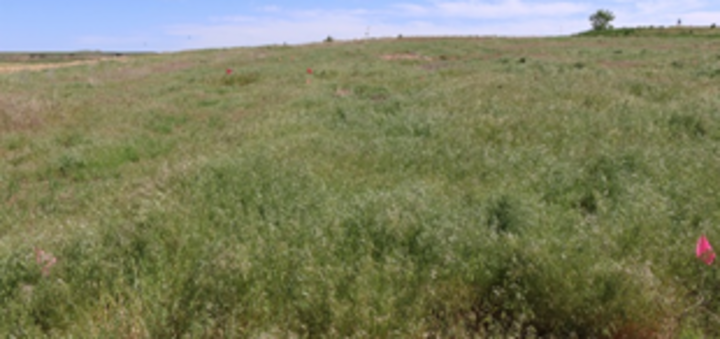
Rangeland Study
The second study was conducted between the fall of 2017 and the summer of 2020 at a range site characterized as a Sands ecological site with a mixture of needle and thread, blue grama, and sand dropseed perennial grasses intermixed with cheatgrass. Esplanade™ was only applied at 5 fl oz per acre, however it was applied either with glyphosate or with a 2 oz per acre rate of rimsulfuron (Matrix® SG). Esplanade™, with glyphosate and rimsulfuron, was applied in November of 2017 and March of 2018. At both application timings, a standalone application of rimsulfuron (Matrix® SG at 2 oz per acre) was included.
Results of the rangeland study (Figure 3) are similar to what was observed in the monoculture study. At the first rating date in May of 2018 (six months after the November application and two months after the March application), control from rimsulfuron was between 20 and 40%, and these ratings were similar when taken again in August of 2019. For Esplanade™, November application and the March application applied with glyphosate resulted in poor cheatgrass control by May 2018, likely because cheatgrass was dormant at the time of application. However, the March application of Esplanade™ with rimsulfuron did provide 60% control of cheatgrass 2 months after application. The rating taken in August of 2019, by comparison, resulted in good control by all treatments containing Esplanade™, with control ranging from 65 to 90%, with higher control observed from spring applications. Similar to the monoculture study, when control was again rated in July of 2020, all herbicide treatments were no longer providing control (Figure 4).
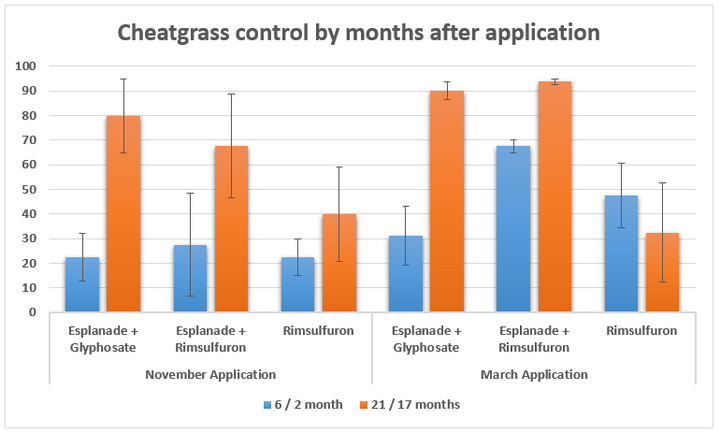
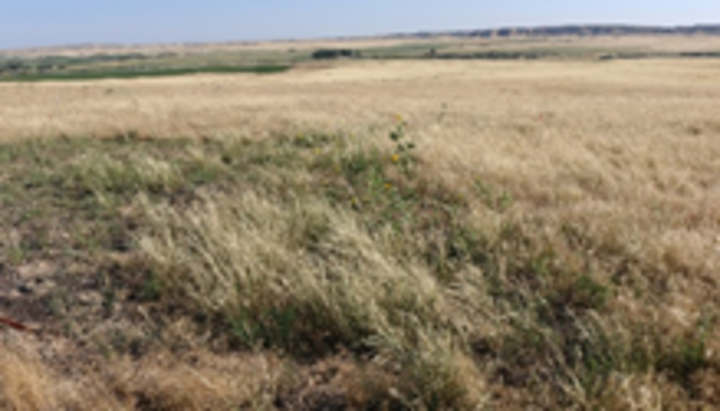
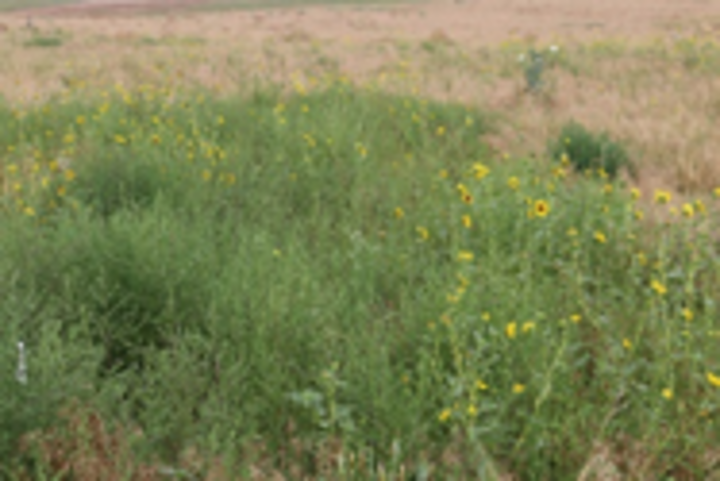
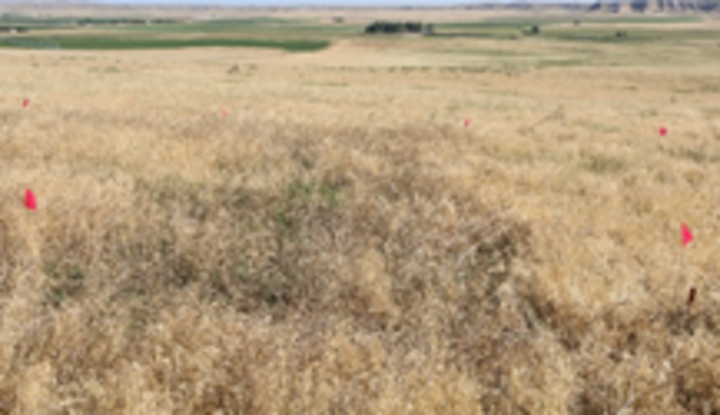
Is Rejuvra™ the Right Choice for Your Operation?
Based on the two studies described above, Rejuvra™ will provide superior and longer lasting control of cheatgrass compared to other herbicide options, reliably controlling cheatgrass for 18 months after application when applied in the spring. However, Rejuvra™ will cost more per acre to apply. According to the annually updated Nebraska Guide to Weed Management, Plateau® costs between $6 and $9 an acre (excluding application cost). A 5 fl oz rate of Rejuvra™ or Esplande™ is estimated to cost around $42 an acre for the product, without factoring in the additional cost of adding glyphosate, rimsulfuron, or Plateau® as a tank mix partner to control already emerged cheatgrass.
Whether or not Rejuvra™ is worth the cost really comes down to the particular operation. In studies conducted outside of Nebraska, desirable forbs and grasses increased in abundance in the years following an application of Rejuvra™ or Esplanade™. We did observe an increase in kochia and common sunflower abundance 17 months after application at the rangeland site, but we did not observe a large increase in desirable perennial grasses. Rejuvra™ may lead to indirect benefits including reducing the fuel load for wildfires, and improving the plant community needed to support wildlife, however these metrics can be difficult to assess and were not looked at in these studies.
Key Points
- Rejuvra™ and Esplanade™ provide improved cheatgrass control compared to older range and pasture herbicide products.
- Rejuvra™ and Esplanade™ also cost more than older herbicide options.
- More research is needed into the economics of weed control in pasture to provide better management guidelines for producers.
